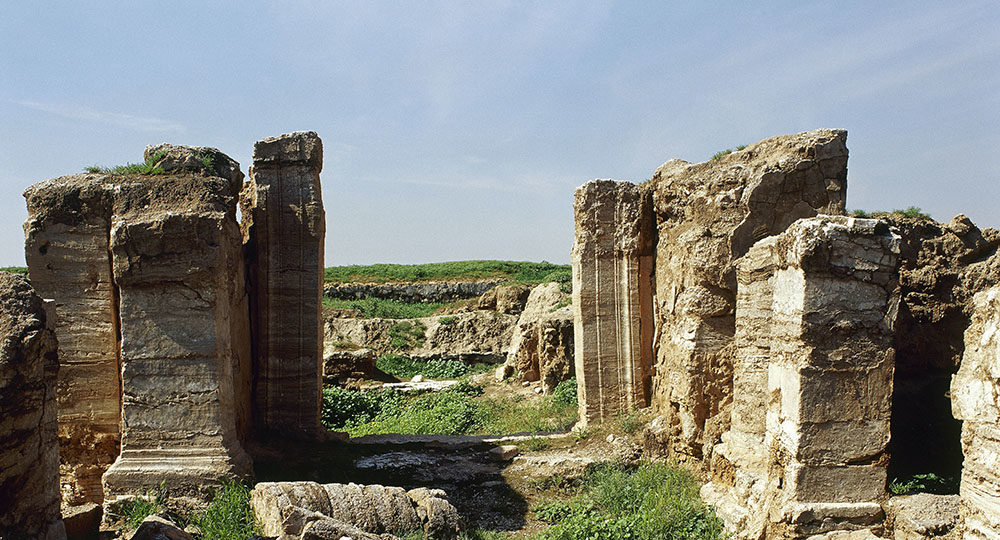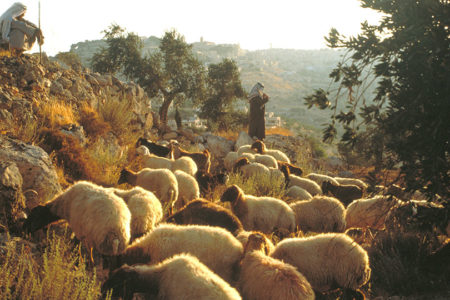The Not-So-Quiet Years
Although the 400 years between the Old and New Testaments are usually termed “silent,” they were neither quiet nor dull. In fact, they were quite the opposite. Though God’s prophetic voice to His people was silent, He orchestrated many significant events to prepare the Jewish nation for the coming of their Messiah.
The last prophet of the Jewish Scriptures was Malachi, who wrote around 450 B.C. His book ends ominously by predicting the coming of the Day of the Lord, preceded by the appearance of God’s prophet Elijah. The Israelites heard no message from God after Malachi.
Even during the successful Jewish revolt led by the Maccabees against the Greeks around 150 B.C., they still waited for “a trustworthy prophet to arise” (1 Macc. 14:41). God would not speak to them again until John the Baptist. He was the one whom Jesus called the embodiment of Elijah, the prophesied one to come (Mt. 11:14). John ended the silent years by announcing the arrival of God’s promised Messiah.
At the end of the Old Testament history, the books of Ezra and Nehemiah record the Jewish people’s return from their 70-year exile in Babylon. They began to reconstruct God’s Temple in Jerusalem (Ezra 3—6), such a significant event that this era is also called the Second Temple Period.
During these 400 years, three significant events prepared the Jewish people for the coming of Jesus: (1) The synagogue was created, (2) the Septuagint was translated, and (3) Hanukkah was celebrated. In fact, without an understanding of these events, it is impossible to appreciate many parts of the New Testament.
The Synagogue: The Persian Period (586–333 B.C.)
God used the Babylonian Empire to discipline His people Israel in 586 B.C. The Babylonians destroyed Solomon’s Temple, killed many inhabitants of Judea, and exiled the rest to Babylon where they lived in seclusion and slavery. Losing their land and Temple devastated the Jewish people and forced them to adapt their community life and worship of God to a new reality.
During this cruel era of captivity, the first synagogues appeared. They became places where exiled Israelites gathered both to worship their God and fellowship as a cohesive people in a foreign land.1
Synagogue buildings eventually sprung up wherever Jewish people were exiled in the Mediterranean world. Although those who returned to Jerusalem rebuilt the Temple in 515 B.C., others continued to worship at synagogues throughout the world. Inside and outside Israel, synagogues also functioned as community centers where Jewish people studied the Torah, collected donations for charity, and kept the official community records.
Although the Old Testament contains no information about synagogues because they developed after the canon was closed, the New Testament mentions them repeatedly in relation to Jesus and His disciples. When Christian churches emerged, they mirrored the synagogues. For example, the order of worship came from the synagogue, as did prayer, singing, reading of Scripture, and the sermon. In the church, Jewish believers in the Jewish Messiah continued the practices of their traditions. God providentially used synagogues during those silent years as the foundation for Christian churches.
The Septuagint: The Ptolemaic Greek Period (333–200 B.C.)
For the Jewish people who returned to the land of their ancestors, Hebrew continued as the holy language, spoken by the religious leaders and written in the Scriptures. However, only about 10 percent returned after the Babylonian Captivity; most remained in the lands of the dispersion.
Two hundred years later, a Jewish community in Egypt had grown large enough to attract the attention of Egypt’s King Ptolemy II, one of four successors to Alexander the Great’s vast empire. Since Greek had become the unifying language throughout that empire, Ptolemy wanted a copy of the Jewish Torah in Greek, his own language, for his library.
The ancient Letter of Aristeas records how this translation was produced. King Ptolemy II asked the Jews in Judea to send 72 translators to Egypt, six from each of their 12 tribes. It claims that these men translated the Five Books of Moses in 72 days. The rounded number of 70 became the name for this translation—Septuagint, in Latin (also written as LXX). Over the next 150 years, all the Hebrew Scriptures were translated into Greek and included in the Septuagint.2
The Septuagint was extremely important to the Greek-speaking Jewish communities in the Roman Empire. It kept God’s Word accessible to new generations outside Israel who were unfamiliar with the ancient Hebrew language. As a result, it was used by the inspired authors of the New Testament; most of their quotations of the Old Testament were taken from the Septuagint, not the Hebrew Scriptures.
It also became the Bible of the early church because most who embraced Christianity spoke Greek. The LXX was the perfect complement to the Greek New Testament, providing early Christians with a Bible written entirely in Greek.
Hanukkah: The Seleucid Greek Period (200–164 B.C.)
Though the Greeks who ruled the Jews in the third century B.C. tolerated God’s people and supported the translation of their Scriptures, the Greeks of the second century B.C. were exactly the opposite. In a struggle to control the trade routes that passed through Israel, the Seleucid family, ruling from Syria, defeated the Ptolemies who had ruled over the Judeans.
With new rulers came new laws. These new Greek leaders wanted their captives to live like other Greeks, so they restricted Jewish religious practices. For example, the Seleucids outlawed circumcision of male infants, forced Jews to violate kosher food laws, and seized the Temple treasures. They persecuted and murdered thousands of Jewish people.
The breaking point came in 167 B.C. when King Antiochus Epiphanes committed the ultimate blasphemy: He profaned the Temple by placing an idolatrous altar over the altar of burnt offering. This act, known as “the abomination of desolation,” rendered the Temple unfit for worship, as the prophet Daniel had predicted (Dan. 11:31).3 Jewish history says Antiochus sacrificed a female pig on the altar, the worst of unclean animals and the highest insult to God.
One zealous family began to revolt. Mattathias, a God-fearing priest, led his sons in refusing to comply with the Greek laws that compromised their faith. Their courage sparked fierce fighting against the Seleucids by armed bands of Jewish freedom fighters led by Mattathias’s son Judah the Maccabee, who eventually liberated Jerusalem from Greek rule and dedicated a purified Temple. Since that day in December 164 B.C., Jewish people have celebrated that holy struggle with the holiday of Hanukkah (“Dedication”) for eight days. Also called the “Festival of Lights,” Hanukkah is still celebrated by Jewish people around the world in November or December. 4
These godly, courageous men and women who resisted the pagan Greek rulers are mentioned in the New Testament: “Women received their dead raised to life again. Others were tortured, not accepting deliverance, that they might obtain a better resurrection” (Heb. 11:35). (To read more about this period, see the apocryphal book of 2 Maccabees 6—7.)
Jesus Himself celebrated the holiday: “Now it was the Feast of Dedication in Jerusalem, and it was winter. And Jesus walked in the temple, in Solomon’s porch” (Jn. 10:22–23). Here Jesus, “the light of the world,” was asked by the Jewish leaders, “If You are the Christ, tell us plainly,” to which He responded, “I am the Son of God” (vv. 24, 36). Jesus came to the Temple rededicated by the Maccabees and presented Himself as the fulfillment of God’s Messianic promises.
During the 400 years before Christ, God providentially provided His people with synagogues for their worship, Scriptures in their common language, and a holiday to remember their calling. These provisions not only fulfilled their immediate needs but also set the stage for the arrival of the Messiah. The 400 not-so-quiet years became a clarion call affirming God’s sovereign plan and pointing to the good news of the Messiah of Israel.
ENDNOTES
- Lee I. Levine, The Ancient Synagogue: The First Thousand Years, 2nd ed. (New Haven, CT: Yale University Press, 2005), 21–44.
- For a helpful survey, see Moisés Silva and Karen H. Jobes, Invitation to the Septuagint (Grand Rapids, MI: Baker, 2005).
- The full account is given in 1 Maccabees 1—4 and 2 Maccabees 6—10. Maccabee means “hammer,” referring to the courageous character of Judah and his fighters.
- The miracle of the oil lasting for eight days is a much later Jewish tradition of the Talmud and is not found in either First or Second Maccabees or Josephus.






